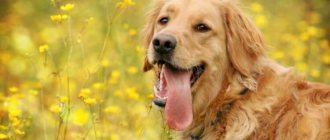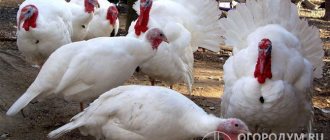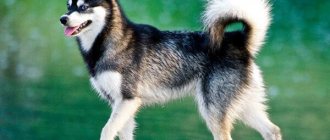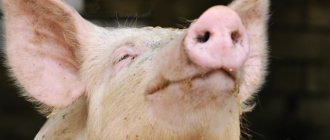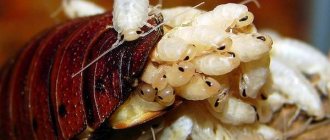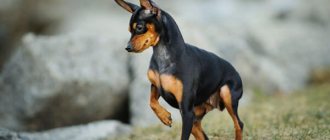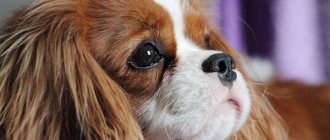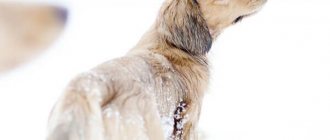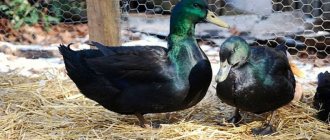Everyone has seen the photo of the turkey. This large bird amazes with its size and characteristic appearance.
Is it worth talking about tender dietary meat and eggs? In a word, if you decide to start raising poultry on your farm, then turkey is one of the best candidates.
The most common turkey meat breeds
Broad Breasted White
This breed was developed by American breeders in the 20th century.
The bird has a heavy oval body with a convex chest. On the gray heads you can see a very long bright red growth. Broad Breasted White
Turkeys can gain up to 22 kg of weight. A special feature of the breed is its excellent productivity and the ability to keep and grow in cages. Broad-breasted White turkeys gain optimal weight faster in cages, using the same amount of feed as if they were kept on pasture.
Moscow Bronze
Another breed resulting from crossing local birds with broad-breasted bronze turkeys. Unlike the previous variety, the body of these turkeys is more elongated, the chest is massive and convex.
Moscow Bronze
Birds of this breed are hardy and can graze on pastures, which makes it possible to keep them on private farms without any problems.
Males of the Moscow Bronze reach up to 20 kg of weight, females - up to 10 kg.
Cross BIG-6
A hybrid bred by foreign breeders. This variety amazes with its productivity and early maturity. BIG-6 is white with a dark spot on the chest. The chest is round, the neck is long and powerful.
Cross BIG-6
These turkeys grow in an interesting way, with their weight increasing exponentially. If at the age of three months a turkey chick weighs about 3-4 kg, then after a month he gains all 10 kg. Ultimately, the weight of an adult male can exceed 24 kg. At the same time, BIG 6 consumes relatively little feed - two and a half kilograms of feed per kilo of live weight.
Hybrid Converter
The bird comes from Canada, the meat of which has a particularly pleasant taste. The basis for the crossing was the White Dutch breed and the already mentioned Broad-Breasted Bronze. The breed is considered one of the most widespread throughout the world.
Hybrid Converter
One of the advantages of this bird is its precocity - the Hybrid Converter (or Indoostrich) quickly gains live weight. The weight of males during five months of keeping can reach 20 kilograms or more, the weight of females is usually half that. Earlier we mentioned the ratio of the weight of the bird to the resulting meat; this breed has one of the best ratios - 85%.
Females of the Hybrid Converter breed are capable of producing about 50 eggs per year
Turkeys begin laying eggs at nine months of age and produce about 50 eggs per year. Females willingly take care of their offspring and carefully incubate their eggs. In our country, this breed is in increasing demand due to its unpretentiousness and rapid adaptation to the climate.
BYuT-8
A relatively recently created breed of turkey by English breeders. Externally, this bird looks decorative. The white lush plumage is combined with an arched neck, a bright red growth. The paws are very massive, as is the body.
BYuT-8
On average, an adult turkey of this breed can weigh about 27 kg, and a turkey - 10 kg. But such a mass can only be achieved with proper fattening. Before 4 months, turkeys are given 2.5 kg of feed, after which - almost 3 kg. After 20 weeks, birds need just under 3.5 kg of feed.
Cross big 6
This “branch,” obtained in 2008 by specialists from the English company British United Turkeys in collaboration with Canadian biologists, is characterized by accelerated rates of maturation and approaching the stated weight mark.
So, after 3-4 months (that is, in one hundred days), this figure usually reaches 40 kg (that is, exceeds the threshold value for “heavyweights”). This is a broiler breed of turkeys used for meat.
They stand out for their snow-white lush plumage (by the way, you can get a lot of fluff from them, weightless and soft) with a “mark” on the chest - a bunch of dark gray hard feathers, large wings and a small head with earrings and a beard of a rich scarlet color. They belong to the broad-breasted turkey breeds.
Since the “output” from them is 80% of the pure product, and the “youth” and grown-up livestock are little susceptible to diseases, representatives of this line are the leaders in popularity in homesteads and peasant farmsteads. The egg production of hens is 105 for the entire time.
Moscow bronze
Bred in Russian breeding grounds, it attracts owners of private farms and poultry farms with good survival results and accelerated growth, adapting well to being both on range and in cages.
“Moscow Bronzes” are used for meat when they reach 5 months, growing to the standard average weight group - 19 kg and 11 kg for turkeys and turkey hens, respectively. The productivity of each unit is 2 eggs per day, a total of 80-90 eggs.
Among other breeds, this one is distinguished by its unusual color - a mixture of rich brown and light shades with a pearlescent tint. However, brownish skin and feather stumps impair the commercial quality of the finished product.
Where to buy
When purchasing any turkey or turkey, spare no time or money in choosing the farm where you will purchase your bird. In many ways, the health of the turkey and the quality of the meat subsequently depend on this.
Description and characteristics of the breed
The white, broad-chested turkey looks very noble: he proudly wears a lush caftan of white feathers with a black medallion on his chest. With its impressive size and beautiful appearance, it stands out among its relatives. The exception is the Hybrid Converter, which is similar to the White Broad-breasted, like its sibling. These breeds have similar external, productive and other characteristics.
But they can still be distinguished by certain characteristics:
- The male Hybrid has a red beak earring of a brighter color.
- The body of the White Broad-chested is set vertically. This is clearly visible in females, whose tails hang almost to the ground.
- Hybrids are more mobile and like to fly over fences.
Types of white broad-breasted turkeys
White broad-chesteds are divided into three species, or weight groups:
- Light: the weight of males is from 9 to 10 kg, and females are 5–6 kg. This species is adapted to being kept in cages, so it is bred on industrial poultry farms.
- Average: males weigh 15–17 kg, and females 7–8 kg. The weight of the chicks at 3 months is already 4 kg.
- Heavy: turkeys grow up to 25 kg (some - up to 30 kg), turkeys - up to 11 kg, chicks at 3 months weigh more than 5 kg.
Appearance
The appearance of the White Broad-chested corresponds to its name - it is a rather large bird with a powerful chest and snow-white feathers. The main external parameters are presented in the table:
| Appearance | |
| Dimensions | males - up to 25 kg, females - up to 11 kg |
| Torso | large, oval-shaped, vertically placed |
| Head | no feathers, pale red |
| Crest | absent |
| Beak | white with long red growth |
| Rib cage | wide, massive |
| Wings | in the female they are pressed tightly to the body, in the male they are lowered down |
| Tail | in males in an excited state forms a round fan |
| Paws | powerful, widely spaced, pink |
| Plumage and color | thick, white in color, with a black spot on the chest. |
Did you know? The leathery earring above the beak of the male can be modified. When he moves, it lengthens; in an excited state, it expands and turns red. And at rest, the growth shrinks and turns pale again.
Productive qualities
White broad-breasted breeds belong to the meat breeds.
Their representatives have a good level of productivity:
- high meat yield rates;
- egg production is average.
Egg production
The turkey begins to lay eggs at the age of 9 months. The egg-laying season lasts 6–9 months. During this time, 100–120 eggs can be obtained from one female.
Characteristics of eggs:
- weight - 80–85 g;
- beige color with brown splashes;
- the shell is dense and very strong;
- 90% of eggs fertilized;
- hatching of chicks at 75%.
Learn about turkey eggs.
Meat yield at slaughter
White turkey poults are most often bred to produce tasty meat. The big advantage of this breed is that babies grow quickly and gain good weight by 2 months. At this age they can be slaughtered.
The best time to slaughter turkey poults:
- 2 months is the minimum period;
- 3–3.5 months is the optimal age for slaughter to get maximum benefits at minimal costs;
- 6 months is the maximum profitable period.
Important! It makes no sense to keep turkeys for meat for longer than six months. From this time on, weight gain slows down, and feed consumption and costs increase.
Weight gain by month:
Weight gain by month:
- at 2 months: 2–2.5 kg;
- at 3 months: light turkey poults - about 3 kg, medium - 4 kg, heavy - more than 5 kg;
- at 6 months (respectively): 5 kg, 7 kg, 10–11 kg.
Advantages and disadvantages
Judging by the reviews of experienced farmers, raising turkeys of this breed is very profitable.
- Advantages
- fast growth;
- large yield of meat after slaughter;
- healthy and tasty meat;
- good egg production and breeding;
- ease of care;
- payback of costs in 5–7 months.
- Flaws
- high consumption of feed and water;
- need for daily walking;
- need for a spacious room;
- kept separately from other poultry.
Did you know? Turkeys came to Europe in the 16th century. Back then they were called Indian roosters and were bred not for their meat, but to get their beautiful bright feathers.
Cross Butte 8
This subspecies is also the result of the activities of British United Turkeys. Belonging to the medium-heavy and heavy divisions, in five months chickens gain 25-27 kg (for males) and about 10-11 kg (for turkeys).
Among other broilers, “Cross Butte 8” stands out for its purity of color without “marks”, red growths around the beak, and neat outlines of the body.
This subtype has not become widespread in Russia.
Feeding
The diet is very important for this bird, no matter what conditions are created in the turkey poultry. Households do not always have the opportunity to use specialized combined feeds. And in this case, another advantage of the white broad-chested breed is revealed. It is capable of gaining significant weight on grain mixtures, unlike varieties intended exclusively for poultry farms. They give good results only on a combined feed.
To guarantee success, you need to establish nutrition from the first days of life. Until the end of the second or third week, turkey poults are given only balanced feed. It is not necessary to start feed in its pure form - a combination of it with prestart is also suitable. Only over time, when the turkeys’ bodies become stronger, can the birds be systematically transferred to independently selected grain mixtures.
The optimal diet for white broad-breasted turkeys contains the most corn, wheat and barley grains (30, 20 and 15%, respectively). Another 5.4% of food should be wheat bran. The fifth place in the diet is shared by peas, alfalfa flour and sunflower meal - 5% each. Turkeys will also need:
- 4% yeast;
- 3% chalk or shell rock;
- the same amount of bone meal;
- 2% fish and meat and bone meal;
- 0.5% table salt.
Complexes of vitamins and minerals are added to the basic diet. They must contain a certain amount of essential fats and amino acids. As for the use of antibiotics, this decision is made individually on all farms. It is best to follow the instructions of your veterinarian. To improve the taste of meat, succulent feed is used.
Along with freshly cut grass, these also include vegetables
They are given in two forms: fresh, mashed and boiled; Vegetable food is placed in feeders before noon, because it is important to control the consequences of its use. Since white broad-breasted turkeys are bred mainly for meat, the feed should contain a lot of proteins
But breeding birds are fed well, but strictly in moderation.
There are a few more recommendations:
- small chicks should be fed at least 8 times a day;
- Adults are usually given food 3 times a day;
- when active reproduction occurs, birds are transferred to 5 meals a day;
- clean, fresh water should be available to turkeys at all times and indefinitely.
Nutrition
Turkey poults begin to be fed on the second day after birth. They are given hard-boiled eggs, chopped into small pieces; white bread soaked in milk or boiled rice. Nettle, scalded in boiling water and chopped, is often added to food.
On small farms and poultry farms, turkeys are usually fed grain crops. This could be: oats, barley or buckwheat. Boiled and raw meat, potatoes and herbs are also suitable for feeding turkeys.
During the period when there is a lot of grass, it is enough to feed turkeys once a week. They eat a variety of beetles, caterpillars, worms and insect pupae, and thus bring immeasurable benefits to vegetable gardens and gardens.
In modern farms, birds are fed mainly with feed in the form of granules or crumbs, as well as in loose form. They are bred exclusively for the purpose of obtaining high-quality poultry meat, dietary and healthy for people of all ages. It’s quite easy to buy turkeys online or in bulk at poultry farms.
Fawn
This meat and egg subcategory was the result of long work by Uzbek poultry farmers. It is zoned, that is, adapted to a hot climate. It is bred in the Caucasian and Central Asian countries.
This breed got its name due to its reddish coloring, with fawn and beige “variations”. The main feature is slow growth and slow achievement of the “killer” criterion (12 kg and 6-7 kg for the “strong” and “weaker” sex).
The most suitable method of care for such birds is to let them roam freely. From such turkeys they produce up to 30 clutches (1-2 eggs per day) per season.
Summarizing this unique review, it is worth saying that you can decide which breed of turkeys is better, not only by familiarizing yourself with the specifics of each of the listed ones, but also by taking into account the characteristics of the premises and territories intended for the cultivation and breeding of these domestic birds, as well as other factors .
Requirements for setting up a turkey poultry house
Turkeys are the most unpretentious birds intended for home breeding. However, even for such a common bird, there are a number of rules for arranging the premises and keeping domestic turkeys:
- 1. Dryness and normal humidity levels are the most important indicators for the prevention of disease in turkeys.
- 2. No drafts.
- 3. Sufficient area at the rate of 1 square meter per 1 adult.
- 4. To maintain excellent hygienic condition, high-quality and regular ventilation is necessary, but without drafts.
- 5. Artificial lighting will increase the duration of daylight hours in winter.
- 6. Containers with ash and sand are installed in each room. Turkeys bathe their feet in this mixture to get rid of parasites.
Be sure to install perches, 1 structure for each individual.
Broiler turkey breeds: photos and descriptions
Broiler turkeys are heavy, but they require special conditions for stable weight gain. Their types with photos and descriptions will be discussed in more detail below, but it is worth finding out what groups these poultry are divided into.
Broilers come in three categories (Figure 3):
- The lungs are distinguished by their relatively low weight (5 kg for females and 10 kg for males). They are characterized by high egg production and resistance to diseases. These turkeys include White Dutch and Norfolk.
- The average ones reach a weight of 7-16 kg (for females and males, respectively). This category includes Moscow and North Caucasian white and bronze.
- Heavy ones meet all standard requirements for broiler birds. The weight of females can exceed 11 kg, and males can reach 30 kg. As a rule, these are crosses that were bred by breeders (Cross Big 6, white and bronze broad-breasted, Canadian broad-breasted).
Figure 3. Popular types of broilers: 1 - white Dutch, 2 - Moscow bronze, 3 - Cross Big-6
Most households prefer to breed local species, as they are adapted to the climatic and feeding conditions of the region. But, if it is possible to provide the birds with an optimal feeding and maintenance regime, more unusual broiler breeds can be bred.
Description of broilers
The main difference between broiler turkeys and regular ones is their increased growth rate. At the same time, birds need good feeding and maintenance.
Broilers have strong legs, a wide chest and a dense build. The plumage is most often white, the crest is poorly developed. In addition, they have a peaceful nature, but consume quite a lot of feed.
Specifics of cultivation
To raise broilers of optimal weight, you need to provide them with the right conditions. Since birds gain weight quickly, they can be kept in cages or aviaries. But it is preferable to provide birds with free access to roam so that they receive the necessary vitamins and can independently search for food (Figure 4).
Particular attention should be paid to feeding broilers:
- The daily diet must include wet mash of mixed feed, crushed grain and bran;
- To saturate the body with vitamins, use fresh vegetables, bone and fish meal;
- Clean water should be in drinking bowls at all times, freely available to birds.
Figure 4. Features of raising broiler turkeys at home
If broilers are raised from a young age, it should be taken into account that the chicks will require special feed. Regular feed for young birds is not suitable for them. This feeding regimen lasts two months, after which they can be transferred to the usual diet for this group.
Breeds of broiler turkeys
Most broiler breeds have been selectively bred to produce quality meat.
Among the most popular turkeys, broilers are distinguished (Figure 5):
- The Canadian Broadbreast is highly productive, quickly gains the weight required for slaughter and grows well on any feed. Young animals reach a weight of 5 kg already at the age of six weeks, and already at 3 months they can be poisoned for slaughter. Birds are not picky about food, but they drink a lot of water.
- The White Broadbreast was bred in the USA. It has bright white plumage, a large body and a wide chest. The rate of weight gain is average, but the birds do not require special housing conditions and grow well even in cages.
- Big 6 is a very popular broiler breed. Outwardly, they are similar to the white broad-chested, but the weight of an adult is much greater, and can reach 25-30 kg.
Figure 5. Popular types of broilers: 1 - Canadian broad-breasted, 2 - white broad-breasted, 3 - Big-6
Broiler breeds also include the Moscow Bronze, which is distinguished not only by high-quality meat, but also by beautiful plumage.
What type of turkey is best for small flocks?
There is technically only one breed of turkey, but there are many varieties available. If you are interested in raising turkeys, it is important to choose a breed that suits your specific needs.
An important criterion to understand is the difference between the commercial type and the old, naturally occurring one. Commercial grade varieties have been specifically developed for turkey product manufacturers, consumer preferences and poultry market efficiency. Older types retain the characteristics of turkey breeds that were developed in Europe and the colonial United States.
Price
A farmer who wants to start breeding bronze turkeys must first decide what stage of development his future pets should reach, since on the market he can purchase hatching eggs, grown chicks, and even an adult family.
Price:
- The average cost of hatching eggs is 120-150 rubles.
- The cost of daily turkey poults - depending on the manufacturer - starts from 350 rubles.
- A nine-month-old North Caucasian bronze turkey can be purchased for 3,000 rubles.
- An adult family of bronze turkeys, consisting of one male and three females, will cost the buyer 9,000 rubles.
Decorative birds
It is not necessary to raise turkeys solely for meat or for a profitable business in order to sell it. There are some breeds that are famous for their external characteristics. For example, slate blue turkeys .
This breed is not as well known as many others. This can be explained by the fact that there is practically no point in raising slate turkeys. The maximum weight of adult individuals is 5 kg, and the weight of females is even less, so there is no profitability in feeding them. The only feature of this breed is its blue plumage, which attracts attention and makes the bird beautiful. Birds can be used as decorative animals.
The breeder needs to independently decide on the choice of breed. You need to base your choice on your goals. If poultry breeding is to become a profitable business, it is better to choose meat-oriented turkeys. That is, animals that gain a lot of weight in a short time.
0
0
Copy link
Broad-chested white, bronze Canadian
The homeland of white broad-chested individuals is America. They were created about half a century ago by crossing the Dutch and Bronze breeds. The resulting individuals, compared to their ancestors, increase in size much faster. Their maturation process is also faster. The meat characteristics of turkey are also higher.
At the moment there are 2 cross breeds: medium, light and heavy. At 3 months, the weight of a light cross is almost 3.9 kg, that of a medium cross is 4.2 kg, and that of a heavy cross is more than 5 kg. As for adults, light cross males weigh 8 kg, and females weigh 5 kg. In the average cross, males can reach 17 kg, and females - approximately 7 kg. As for the heavy cross, males will weigh up to 25 kg, and females - a maximum of 11 kg. They are the largest.
White huskyBirds of the Moscow regionKeeping guppyScreams, feathers and droppings - are you ready to get a parrot?
Turkey poults develop within 3-3.5 months. During this time, they take on a marketable appearance and are completely ready for slaughter. This breed has an egg production rate of approximately 95-115 eggs per year. They weigh an average of 85 g. The shell is creamy or whitish in color. About 80% of all eggs are fertilized, but only 65% hatch into young. The survival rate is quite good, but it must be borne in mind that these largest turkeys can only grow in places with warm climatic conditions.
Based on broad-breasted white turkeys, such breeds as Hybrid Grade Maker and Hybrid Coverter were created in the 60s of the 20th century. The first belongs to the average type, but the second is considered a heavyweight, reaching the greatest weight. These hybrid varieties have meat containing a large amount of protein. Great for diets
Another popular broad-breasted breed is the Canadian broiler. They have been bred for a very long time through selective breeding. But now they are not afraid of the cold of the Russian winter. They can survive even on Sakhalin and Siberia. But they do not tolerate too hot weather. Another disadvantage is that baby turkeys are prone to various diseases, so they require careful care. But there are many other advantages. For example, individuals quickly gain weight. Already at 1.5 weeks they weigh 5 kg. Adult broiler turkeys weigh 30 kg. It is best to slaughter 3 months after their birth.
The bronze broad-chested breed was created by crossing black English dogs with outbred American ones. These turkeys have a high egg production rate. The female brings up to 120 pieces per year. Of these, approximately 80% are fertilized. As for the young, they emerge from 75% of fertilized eggs. By the way, turkeys of this breed are capable of hatching not only their own eggs, but also the offspring of chickens and ducks. In addition, the meat of these birds is very tasty. Adult males weigh approximately 15 kg, and females - 10 kg.
Individuals of the bronze breed are also distinguished by their beautiful appearance. They have a large body, a wide chest, and powerful legs. The tail of males is large and fan-shaped. The feathers are black in color, but with a bronze, copper or greenish tint. They are very thick. The only downside of this breed is that they do not adapt well to living with free grazing.
Individuals of the bronze breed of turkeys have a beautiful appearance. They have a large body, a wide chest and strong legs. The tail is large and fan-shaped. The feathers themselves are very lush. They are all black, but with copper, greenish and bronze tints. The disadvantage of this breed is the poor adaptability of individuals to living with free range. This is due to the fact that their breeding is carried out on an industrial scale. This is why this breed was bred. As for small farms, such individuals are also suitable, but they need to be kept in a closed barn. By the way, this breed is used to breed improved crosses.
Cross station wagon
These broilers, optimally adapted for keeping in the private sector, were bred by breeders from the Russian Caucasus. Young and adult livestock are characterized by unpretentiousness and low feed consumption.
Laying hens are characterized by the ability to lay about 60-70 eggs per year. Almost all of them hatch into viable chicks.
Cross-universal – middle-weight broilers of the egg direction. By the end of the cycle, males and females reach 17 kg and 11 kg, respectively, for each sex.
- Raising turkeys - care, maintenance, feeding and profitability of turkey farms (130 photos)
Treatment of turkeys - signs and diagnosis of the most common diseases of young and adult turkeys (95 photos)
- Turkey breeds - the most popular and best breeds for breeding in the home (115 photos)
Varieties
To better understand the characteristics of the main branch of the Bronze-708 breed, it is necessary to compare this type of turkey with other representatives of bronze turkeys. This will also make it possible to understand exactly how this variety can be improved by crossing. The bronze broad-breasted type (also known as the American bronze) was developed in the USA through the hybridization of wild American and Norfolk birds. Breeders set a goal to achieve the largest possible mass when kept in captivity.
The neck of bronze broad-breasted turkeys is covered with bronze feathers. They are characterized by a metallic sheen. The part of the head where the skin is not covered by feathers includes fleshy growths. Another similar growth is located above the beak. The back is approximately the same, but the ends of individual feathers have transverse black stripes. The chest part is painted in a dark bronze tone.
Compared to conventional bronze-708, the meat productivity indicators look very impressive. By 3 months, birds gain a maximum of 4.4 kg. After another month, body weight increases to 6.6 kg. During the season it is possible to collect at least 55 eggs. Poultry's strong immunity makes farmers' lives easier.
Problems can only be associated with the fact that conditional weight is gained more slowly than with heavy cross-country types. Caucasian (or rather, North Caucasian) birds are another result of attempts to adapt the “Americans” to Russian conditions. This branch got its name because it was bred in the Stavropol Territory. We tried to make the animals as large and unpretentious as possible, and to ensure rapid weight gain. They were purposefully selected based on this indicator.
The North Caucasian Bronze Turkey has been included in the register of officially used breeds since 1956. Now it can be found mainly in Central Asian countries and in the south of Russia. In coloring, this breed is very similar to broad-chested individuals. But there is also a pronounced difference - the feathers have a richer gloss. The tail is characterized by a matte sheen.
The large body is slightly elongated. The chest, although inferior to that of the bronze broad-chested, is also very massive. The back is very broad. The head is of modest size.
The average egg production of this breed is 70 eggs per bird. Due to the large size of turkeys, artificial insemination is preferable. The North Caucasian bronze subtype is also attractive because it can be kept on free grazing. In the southern regions of the country, there are no special problems with their cultivation. There are no specific nutritional requirements.
French broad-breasted turkeys are just that classic bronze-708. It is noted that by 6 months a turkey can pull 15 kg, and a turkey can pull up to 10 kg. Under favorable conditions, in another 6 months these figures will be doubled. Another species - Moscow turkeys - was bred in the Russian capital by crossing local bronze and broad-breasted specimens. This type is in demand by various breeders, as it is characterized by:
- minimal care requirements;
- elegant appearance;
- ease of organization of the economy.
The Moscow branch has a rather long, but dense body. The chest is not only wide, but also has a characteristic slight convexity. The large head rests confidently on the elongated neck. Like the classic bronze-708, this bird belongs to the meat category. In adulthood, depending on gender, a weight of 8-9.5 and 15-18.5 kg can be gained.
It is also appropriate to compare bronze-708 with Canadian broad-breasted turkeys. They were obtained by combining material from wild American and English black individuals. A characteristic feature is the high level of livestock survival. Birds can be distinguished by their white or black colors.
Traditional varieties
Eight traditional varieties of turkey are classified in the American Poultry Association's (APA) Standard of Excellence. Figure 1 shows examples of four of these varieties. The American Livestock Breeding Organization (ALBC) recognizes additional breeds, including the Jersey Giant and the White Midget (dwarf white). In addition, some poultry farms raise other varieties, including Crimson Dawn, Calico, and Red Phoenix.
Figure 1. From left to right: White Dutch, Fawn (blue), Bourbon Red and Royal Palm Turkeys.
Commercial turkey production has focused primarily on the broad-breasted Standard Bronze, White Dutch and Beltsville Small White varieties. In the last few decades, other varieties have been preserved primarily for exhibition purposes. Recently, however, there has been increased interest in the production of old breeds.
Standard turkeys have retained the ability to mate naturally, whereas most of today's commercial varieties are too large to breed naturally and are bred only by artificial insemination. Additionally, heritage turkeys have a long lifespan, slow growth rate, and feed outdoors.
Most varieties of old breeds are well adapted to free range. As a rule, they are more resistant to disease than commercial varieties and feed themselves well and plentifully. They also mate naturally and can raise their young turkeys, although mothering ability varies from species to species. If you are breeding older breeds, be aware that their slow growth rate increases production costs, especially the overall amount of feed consumed. These turkeys also produce less breast meat. Typically, 70% of the meat produced by a Broad-breasted turkey is breast meat, while traditional breeds produce a 50:50 ratio of white and dark meat.
If you are interested in raising heritage turkeys or breeding purebred turkeys for poultry shows, you have several options to choose from.
Standard bronze rock
The breed was developed in Rhode Island. It's a big bird, but it doesn't look like it because of its dark feathers. It was created by crossing turkeys brought to America by settlers with eastern wild turkeys. The resulting offspring showed hybrid advantages. It was larger than European turkeys, but more docile than the wild turkey.
Beltsville small white
The species was developed in the 1930s at the United States Department of Agriculture (USDA) research station in Beltsville, Maryland. For many years it was the most popular type of turkey among commercial breeds. The development of the broad-breasted turkey has led to a decline in the production of Beltsville small whites. The breed was created in response to market research indicating that consumers were interested in a small to medium-sized turkey without feathers. However, this did not satisfy the needs of restaurant owners who wanted to buy larger birds from which they could get more pieces of meat. The result was the development of the Beltsville Small White Turkey.
White Dutch
Early explorers who sailed to the Americas brought white-winged turkeys to Europe, raised by the Aztecs. From these birds a new breed was created in the Netherlands and reintroduced into the colonies by early Dutch settlers (hence the name). The White Dutch is said to be the calmest species and the white coloration of the feathers reduces the visibility of any plucking residue.
Red Bourbon
The breed (shown in Figure 2) is named for its origin in Bourbon, Kentucky, in the late 1800s. Bourbon turkeys are said to be good-natured and good mothers and hens.
Figure 2. Adult Bourbon Red turkey.
Narragansett
The variety is named after Narragansett Bay in Rhode Island. It was developed by crossing between the eastern wild turkey and domesticated turkeys brought to America by colonists. Narragansett was the basis of the early turkey industry in New England. This breed is an excellent choice for small herds because it has a calm disposition and feeds well. In addition, she matures early, produces excellent eggs and has excellent maternal instincts.
Female Narragansett breed
Lavender (blue)
The breed (also called Blue Slate or Lavender) is named for the ash-blue color of its feathers. Although it was recognized by the APA in 1874, significant variations in coloration still exist, making this bird difficult to breed. Lavender turkeys are gaining popularity in small poultry operations where they are raised in small flocks due to their durability and excellent flavor of the meat.
Black
The black variety (sometimes called Spanish black or Norfolk black) originated in Europe from the first turkeys brought there from America. Blacks were crossed with wild turkey to produce the Bronze, Narragansett and Slate (Lavender) varieties. Until the beginning of the 20th century, the variety was very popular, then it was supplanted by Broad-Breasted White.
Royal Palm
The Royal Palm variety (also called Crollweitz or Pied) is bred primarily as an ornamental breed. King palms have the smallest breastbone of all turkey varieties but have a calm disposition. They are prolific and reproduce quickly. Recognized in 1977, they were one of the most recent turkey varieties to be included in the APA Standard of Excellence. Royal palm turkeys persist in some areas of Europe, but are not widely bred.
Royal palm
Dwarf white
The breed was developed at the University of Massachusetts in the late 1960s as a small complement to the Broad-breasted White, but the anticipated demand for it never materialized. Midget White turkeys are relatively friendly and well suited to small farms.
Let us dwell in more detail on the characteristics of the breeds.
Best for home breeding
On private farms, poultry farmers raise turkeys mainly for meat, since the birds grow quickly and have high meat productivity. Based on these considerations, the most cost-effective are crosses, among which Big-6 stands out. The birds are characterized by high productivity, have a lot of weight, and females produce a sufficient amount of high-quality egg products. In addition, turkeys consume a small amount of feed, which is also very profitable. Other crosses are slightly behind this breed: Chiton and But-8, although they differ from other varieties in efficiency.
These breeds are good because with little input of feed and in a relatively short period of time, you can get quite a large amount of good quality meat. To have crosses, you need at least minimal experience in poultry farming, since the breeds require the creation of certain conditions and care. Based on this, breeding crosses is not suitable for everyone. The best option for beginners and those who do not want to spend a lot of time providing the necessary conditions would be local bird breeds. They weigh less, grow longer, but are easy to care for. In the summer, birds are quite capable of feeding themselves on a free range. Suitable for home breeding:
- Hybrid Converter is a Canadian hybrid, very popular due to its high meat yield, endurance and quick adaptation to different conditions;
- white Moscow - remarkably suitable for growing in backyards;
- Uzbek fawn - does not have too high productivity, but is extremely undemanding: the birds themselves obtain food for themselves and their offspring;
- North Caucasian birds are unpretentious, grow well, and are not picky about food;
- Tikhoretskaya black - characterized by low demands and free-range keeping, which significantly saves the amount of feed.
Commercial options
Turkeys are used primarily for meat production. Most consumers prefer breast or white meat. To accommodate this preference, producers were motivated by genetic selection, which led to the emergence of new, widespread varieties of turkey. These commercial varieties have a fast growth rate, so many owners raise commercial turkeys for their high meat production and feeding efficiency. The most popular varieties for small-scale production are the commercial Bronze and White varieties. The Bronze has plumage reminiscent of a wild turkey, and the Broad-breasted White was chosen for its white plumage and fast growth. Although both types are good for producing turkey in small flocks, the disadvantage of the Bronze breed is that the axils of dark feathers sometimes remain on the meat even after the carcass has been processed.
Blue
The blue turkey breed has another name - “slate”. This is a rare breed for our country. It can only be found in nurseries and isolated private farmsteads. The breed is considered decorative for most poultry farms, because even adult males barely reach 5 kg in weight.
An attractive side of the Blue breed is the unusual coloring of the birds, which can range from a soft blue tint (standard) to dark gray (culling). Interspersed with other colors indicate a non-purebred origin. Many blue breed breeders note increased sensitivity and sickness in birds.
Abroad, turkeys are bred not for meat, but as a pet, like parrots. Blue turkeys bond quickly with people and have a playful nature.
